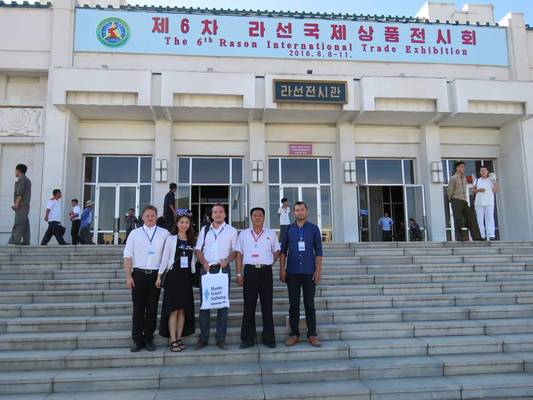6th Rason International Trade Exhibition and the East Asian-Australasian Flyway
Group Photo
In cooperation with the EAAF Partnership Secretariat an exhibition was created to introduce the nature reserve, but also to unveil the significance of North Korea as a stopover site for migratory birds. Migratory waterbirds rely on wetland habitats across the flyway for breeding, roosting and feeding. The DPRK has designated a total of 24 protected areas to date. A number of these sites are known to support significant amount of key migratory species of the East Asian-Australasian Flyway, making them of international importance for the conservation of migratory waterbirds and the habitats they need to survive. It is essential to work together across the flyway to protect the sites important to the migration of these birds.
Hanns Seidel Foundation Korea specifically supports and promotes cooperation and exchange on the Korean Peninsula. While North Korea is often isolated from the international community for internal and external reasons, this isolation can be a severe threat when it concerns environmental issues that need transnational efforts. Hanns Seidel Foundation conducts different activities to tackle this threat.
Especially in Rason, which is bordering China and Russia, transboundary cooperation and exchange is needed to conserve the environment. At the same time the local administration is seeking economic development that is needed to improve the situation in the zone, mostly the livelihoods of local people. Within this complex situation it is important to raise awareness for environmental issues and how the protection of the environment can go along with economic development and how the preservation also contributes to improve the living standard in the area.

